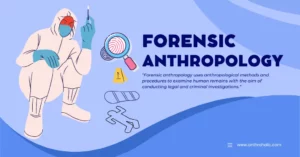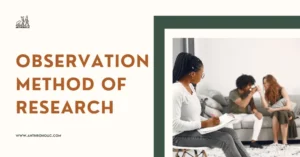AI Answer Evaluation Platform Live Now. Try Free Answer Evaluation Now
Daisy Bates
Daisy Bates was a woman of paradoxes-an Irish-born self-taught anthropologist who lived for decades among Aboriginal communities in some of the harshest regions of Australia, all while holding views that many today find deeply problematic.

Often dressed in Edwardian attire and living alone in desert camps, Bates became a symbol of eccentric devotion to fieldwork. She meticulously recorded Aboriginal languages, customs, and genealogies, and earned a government stipend for her research. Yet she also promoted the now-debunked notion that Aboriginal Australians were a “dying race,” a belief that shaped much of her writing and public commentary.
Through her widely read book The Passing of the Aborigines (1938), newspaper articles, and lectures, Bates gained notoriety as both a passionate observer and a controversial voice in the colonial narrative of Australia. Her life and work continue to provoke debate: was she a protector, a participant in colonial erasure, or something more complex?
Early Life and Education
Daisy May O’Dwyer was born on October 16, 1859, in Tipperary, Ireland, into a modest Roman Catholic family. Following her mother’s death and her father’s subsequent migration to the United States, Daisy was raised by relatives. She emigrated to Australia in 1884, seeking opportunity and independence in a society where women could reinvent themselves.
From the beginning, her story was filled with self-mythologizing. She often fabricated details about her upbringing, education, and family status-claiming aristocratic origins and even falsely asserting she had studied at prestigious European institutions. In reality, she was largely self-educated but resourceful, with a flair for language, writing, and public image.
After arriving in Australia, Bates worked as a governess and later took up journalism, writing under various pseudonyms. Her early articles revealed an interest in social issues and Indigenous welfare-an interest that would later define her life’s work.
Personal Life and Controversy
Bates’s personal life was as complex as her academic one. In 1884, she married Breaker Morant (Harry Harbord Morant), a British-born poet and soldier who would later gain notoriety during the Boer War. However, the marriage was short-lived and possibly never legally dissolved.
Later, she married Ernest C. Bates, a horseman and drover, although that relationship too was fleeting. She continued to use the surname “Bates” professionally and socially, even after the couple separated. Over time, Daisy constructed a public identity that blended truth, fiction, and strategic omission.
Her reinventions and eccentricities made her both intriguing and controversial. She often presented herself as an authority on Indigenous issues while espousing Eurocentric and often racist views, including the idea that Aboriginal people were “doomed to extinction.” This belief, common among early 20th-century anthropologists, deeply shaped her work and legacy.
Ethnographic Work with Aboriginal Communities
In 1904, Bates was appointed by the Western Australian government to investigate the conditions of Aboriginal people, especially regarding allegations of mistreatment by white settlers. She began a series of field investigations that took her deep into the Australian outback, where she would live for much of the next 30 years.
Her work focused on documenting Aboriginal languages, kinship systems, and customs, particularly among the Ngarrindjeri, Mirning, and other groups. She meticulously compiled vocabularies, genealogies, myths, and social structures. These records, many of which are preserved in national archives, remain valuable to historians and linguists today.
Bates chose to live alone in remote desert camps, often under difficult conditions, including extreme heat and limited resources. She became known for her strict Edwardian dress, even in the outback, and for her refusal to adopt modern conveniences. Her dedication impressed some and bewildered others.
While her work was pioneering in terms of length and depth of contact, it was shaped by her belief that she was witnessing the “end” of Aboriginal culture. This framing, alongside her support for policies like segregation and assimilation, drew criticism-even in her own time-from more progressive anthropologists and Indigenous advocates.
Theories and Publications
Daisy Bates’s most famous and controversial work is The Passing of the Aborigines (1938), a book that combined personal anecdotes, ethnographic detail, and sweeping generalizations about Aboriginal life and destiny. Published with editorial assistance from Ernestine Hill, the book became a bestseller in Australia and the UK. It presented Bates as both a lone protector of Aboriginal people and a witness to their supposed inevitable extinction.
Her theories-deeply rooted in early 20th-century racial science and social Darwinism-emphasized cultural decline and the belief that Aboriginal Australians were biologically and socially incapable of adapting to modernity. She saw herself as preserving the remnants of their culture before it disappeared, using terms like “the dying race” that now draw widespread criticism.
Despite the ideological flaws, Bates contributed significant linguistic and genealogical data, particularly in regions that had been minimally documented by other researchers. Her field notebooks, now housed in archives such as the National Library of Australia, include extensive vocabularies, kinship charts, and social observations that remain of interest to linguists and historians-especially when approached critically.
Public Image and Legacy
Daisy Bates crafted a public persona as the “Queen of the Never Never”-an eccentric, resilient woman living in the desert, supposedly devoting her life to the welfare of Aboriginal Australians. This romanticized image was reinforced by the media, which often portrayed her as a heroic lone figure in the wilderness, detached from both government and modern society.
In reality, Bates had a complex and often strained relationship with both Aboriginal communities and the Australian government. She was respected by some Aboriginal people for her consistency and willingness to live among them, but others were wary of her views and approach. Her advocacy for segregationist policies, such as the separation of Aboriginal children from white Australians, aligned her more with colonial administration than Indigenous resistance.
Still, her efforts to document Aboriginal cultures at a time of intense displacement and violence did contribute to the historical record-though they must be interpreted through the lens of her biases and the broader colonial context.
In recent decades, Bates’s legacy has been reassessed. Scholars like Rebe Taylor and Anna Cole have explored the contradictions in her work: between care and control, between documentation and erasure. She remains a figure who is both admired for her endurance and critiqued for her complicity in colonial ideologies.
Later Years and Death
In her final decades, Daisy Bates lived in increasing poverty and isolation. Though once celebrated, she struggled to secure stable funding or institutional support for her work. She continued to live in makeshift camps in South Australia and Western Australia, often in extreme conditions, while maintaining correspondence with government officials and anthropologists.
Despite her declining health, she wrote regularly for newspapers and journals, remaining a public figure into the 1940s. Her strong will and theatrical presentation ensured continued media attention, even as her influence within academic anthropology waned.
Daisy Bates died on April 18, 1951, in Adelaide, aged 91. She was buried with the honor of a state funeral, a testament to the symbolic weight she carried in the public imagination.
Today, Bates is remembered not just as a fieldworker or eccentric, but as a complicated figure whose work reflects the tensions of her era: between empire and empathy, science and stereotype, preservation and power.
Conclusion
Daisy Bates occupies a singular place in Australian history-a woman who immersed herself in the lives of Aboriginal people at a time when few white Australians showed sustained interest, yet who did so with ideas shaped by the colonial mindset of her era.
She was tireless in her fieldwork, documenting languages, rituals, and kinship systems in a body of work that remains historically valuable, particularly in areas that were rapidly transforming under the pressures of colonization. Her efforts to live for decades in remote and difficult conditions speak to a remarkable personal commitment, even as her motivations and conclusions were entangled with flawed theories about race and progress.
Her most enduring publication, The Passing of the Aborigines, shaped public perceptions of Aboriginal Australians for generations-but also reinforced harmful stereotypes and policies rooted in the belief in cultural extinction. As such, her legacy is as problematic as it is pioneering.
Today, Daisy Bates is neither lionized nor dismissed. She is studied with critical distance—acknowledged for the scope and dedication of her ethnographic work, but also held accountable for the assumptions and ideologies that informed her interpretations. Her life serves as a case study in the complexities of early anthropology, where genuine curiosity and care could coexist with colonial frameworks and deep cultural blindness.
In understanding Bates, we come closer to understanding the intersection of anthropology, empire, and gender in the early 20th century-and the long road toward more ethical and inclusive approaches in the study of human cultures.
References
- “Daisy May Bates.” Australian Dictionary of Biography. https://adb.anu.edu.au/biography/bates-daisy-may-83
- “Daisy Bates Collection.” National Museum of Australia. https://www.nma.gov.au/explore/collection/highlights/daisy-bates
- “Daisy Bates.” Bérose International Encyclopaedia of the Histories of Anthropology. https://www.berose.fr/rubrique1149.html?lang=en
- “The Passing of the Aborigines.” Project Gutenberg Australia. https://gutenberg.net.au/ebooks04/0400661h.html
- “The Passing of the Aborigines: A Lifetime Spent Among the Natives of Australia.” Amazon. https://www.amazon.com/Passing-Aborigines-Lifetime-Natives-Australia/dp/1849020493
- “The life and times of Daisy Bates, pioneer anthropologist.” Western Australian Museum. https://visit.museum.wa.gov.au/greatsouthern/tuesday-curatorial-life-and-times-daisy-bates-pioneer-anthropologist
- “Daisy Bates as a Female Excluded Ancestor.” History of Anthropology Review. https://histanthro.org/news/announcements/daisy-bates-as-a-female-excluded-ancestor-by-macdonald-and-coldrick/
- “The Passing of the Aborigines: A Lifetime Spent Among the Natives of Australia.” Goodreads. https://www.goodreads.com/book/show/9111365-the-passing-of-the-aborigines



